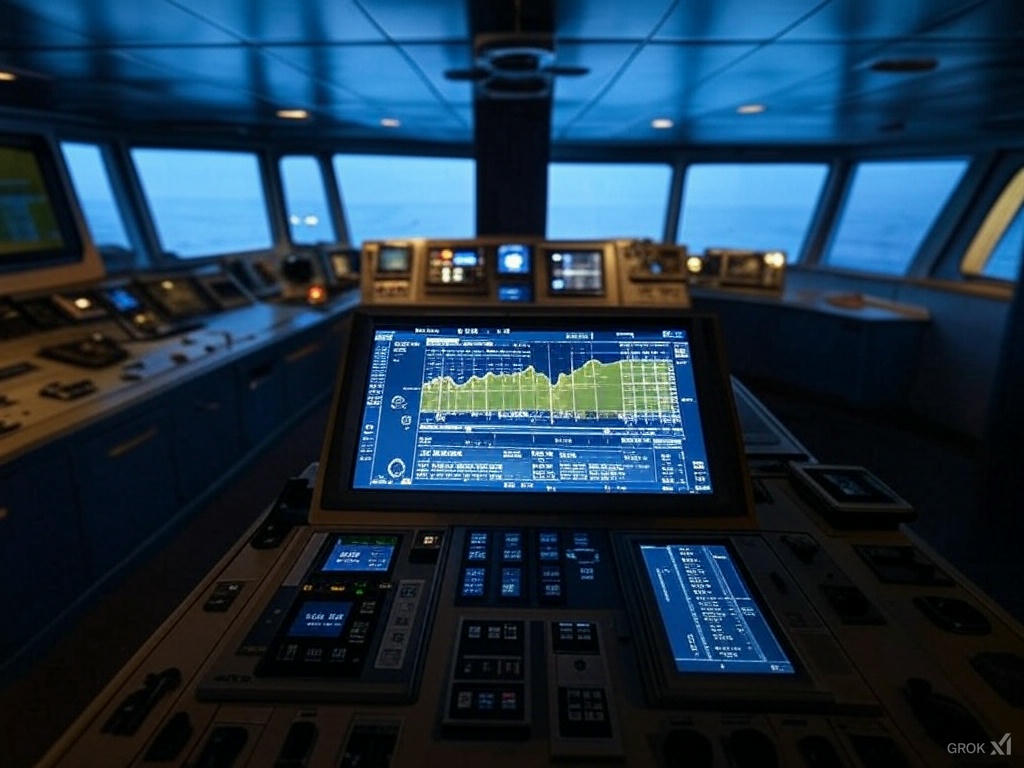Introduction: Unveiling Hidden Anomalies in Maritime Traffic
Maritime safety is a critical concern in today’s interconnected world. With thousands of ships navigating global waters daily, ensuring compliance with standard routes and detecting anomalies is essential to prevent accidents, smuggling, and unauthorized movements. Automatic Identification System (AIS) data provides a wealth of information about ship movements, but identifying anomalies within this data manually is nearly impossible. This is where AI-driven anomaly detection comes into play.
In this article, we explore how deep learning - specifically, autoencoders - can help detect unusual patterns in AIS data. This approach enables maritime authorities and businesses to enhance safety and operational efficiency using data-driven insights.
Understanding AIS Data and Its Challenges
AIS data contains crucial ship movement details, including:
- Vessel ID and type
- Latitude and longitude
- Speed and direction
- Timestamped location updates
However, the challenge lies in analyzing vast amounts of AIS data in real time. Identifying anomalies - such as ships deviating from standard routes or moving erratically - requires advanced machine learning techniques.
The Role of Autoencoders in Anomaly Detection
Autoencoders are neural networks designed to learn efficient representations of data. They work by compressing input data into a lower-dimensional space (encoding) and then reconstructing it (decoding). If a ship follows a normal trajectory, the autoencoder reconstructs it accurately. However, anomalies - like unauthorized movements - lead to higher reconstruction errors, signaling a deviation.

Our model follows these key steps:
- Data Preprocessing: Cleaning and normalizing AIS data.
- Feature Engineering: Selecting critical attributes such as speed, heading, and position.
- Training an Autoencoder: Learning normal patterns in ship behavior.
- Anomaly Detection: Identifying deviations based on reconstruction error.
Implementation: Building the AIS Anomaly Detection Model
- Loading and Preprocessing AIS Data We start by importing necessary libraries and loading AIS data:
import pandas as pd
import numpy as np
import matplotlib.pyplot as plt
from keras.models import Sequential
from keras.layers import Dense
from sklearn.model_selection import train_test_split
from sklearn.preprocessing import StandardScaler
df = pd.read_csv("aisdk-2024-02-27.csv", on_bad_lines='skip')- Building the Autoencoder Model We use a simple feedforward autoencoder architecture:
model = Sequential([
Dense(32, activation='relu', input_shape=(num_features,)),
Dense(16, activation='relu'),
Dense(8, activation='relu'),
Dense(16, activation='relu'),
Dense(32, activation='relu'),
Dense(num_features, activation='sigmoid')
])
model.compile(optimizer='adam', loss='mse')- Detecting Anomalies After training, we apply the model to new data and measure reconstruction errors:
from tensorflow.keras.models import load_model
model = load_model('autoencoder_model(keras).keras')
reconstruction_errors = np.mean(np.abs(model.predict(X_test) - X_test), axis=1)
threshold = np.percentile(reconstruction_errors, 95)
anomalies = X_test[reconstruction_errors > threshold]Results and Insights
Our model effectively identifies ships with abnormal behavior based on AIS data patterns. The key takeaways include:

- High accuracy in detecting anomalies using learned ship movement patterns.
- Scalability to process large volumes of AIS data in real time.
- Potential real-world applications, including maritime security and logistics optimization.
Conclusion: Advancing Maritime Safety with AI
For those interested in exploring the complete implementation, you can find the source code in my GitHub repository.
This project showcases how deep learning can transform maritime safety by enabling intelligent anomaly detection. By leveraging AIS data and autoencoder-based models, we can enhance monitoring, prevent illicit activities, and improve overall navigation efficiency. As AI continues to evolve, its integration into maritime operations will redefine the industry’s future.
Are you working on AI-powered anomaly detection? Share your thoughts and experiences in the comments!

